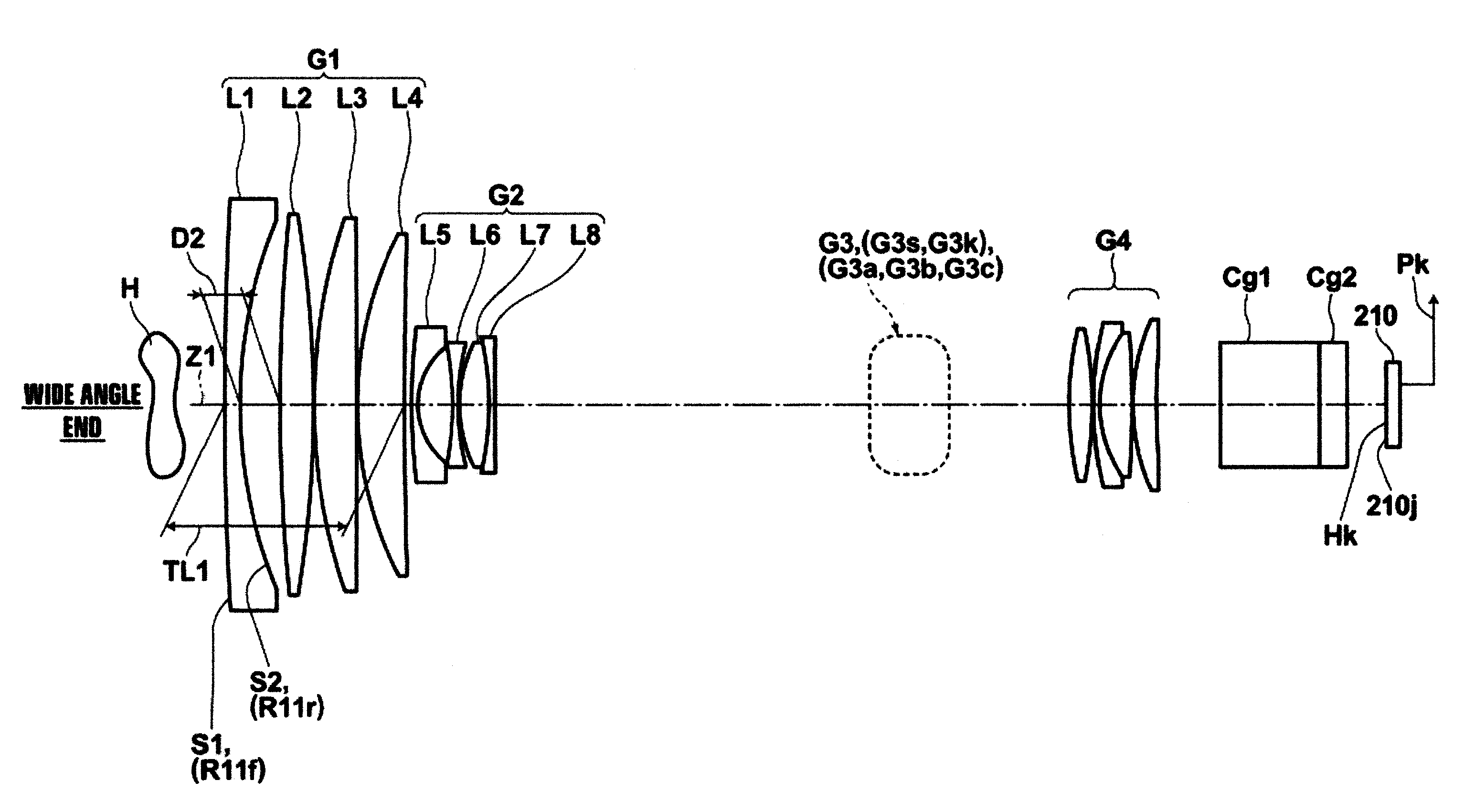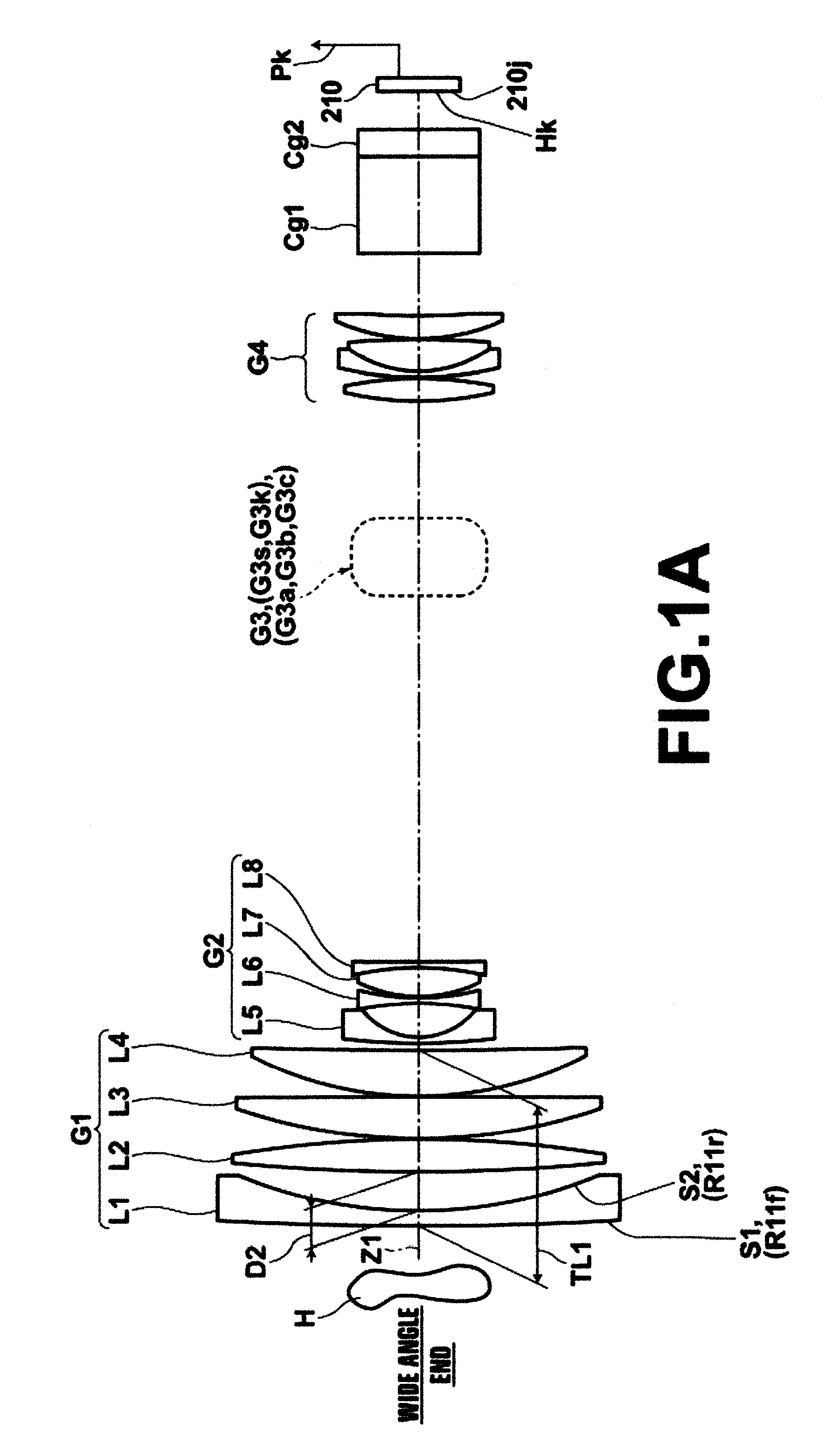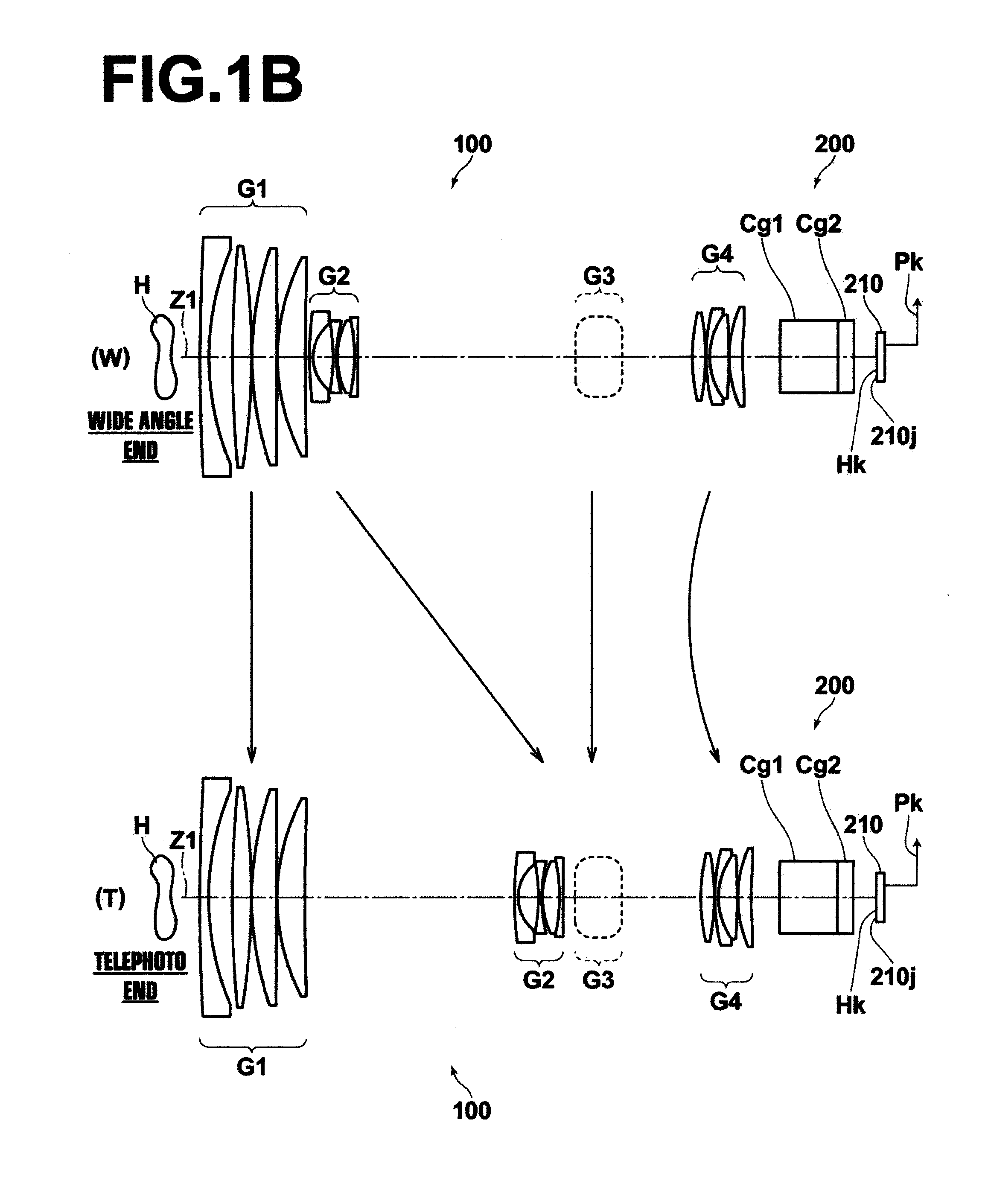Zoom lens and imaging apparatus
a zoom lens and imaging apparatus technology, applied in the field of wide angle zoom lenses, can solve the problems of large size of the optical system, no such zoom lens has been manufactured for sale, and the size of the first lens group even alone is extremely large, so as to achieve high variable magnification, wide angle of view, and the effect of not increasing the size of the apparatus
- Summary
- Abstract
- Description
- Claims
- Application Information
AI Technical Summary
Benefits of technology
Problems solved by technology
Method used
Image
Examples
specific examples
[0197]Next, with reference to FIGS. 2A, 2B through 9A, 9B and Tables 1 through 9, numerical data or the like related to the zoom lenses of the present invention in Examples 1 through 8 will be described.
[0198]In FIGS. 2A, 2B through 9A, 9B, the same signs as those in FIGS. 1A, 1B, which illustrates the zoom lens 100, represent elements corresponding to the elements in FIGS. 1A, 1B.
[0199]FIGS. 2A, 2B through 9A, 9B are schematic cross sections illustrating the structure of the zoom lenses in Examples 1 through 8, respectively.
[0200]FIGS. 2A through 9A are diagrams illustrating the state of the zoom lenses in detail when zoom setting is at telephoto end. FIGS. 2B through 9B are diagrams illustrating the state of the zoom lenses when zoom setting is at wide angle end and the state of the zoom lenses when zoom setting is at wide angle end in comparison. In FIGS. 2B through 9B, the upper section (W) illustrates the state in which zoom setting is at wide angle end, and the lower section (...
PUM
 Login to View More
Login to View More Abstract
Description
Claims
Application Information
 Login to View More
Login to View More - R&D
- Intellectual Property
- Life Sciences
- Materials
- Tech Scout
- Unparalleled Data Quality
- Higher Quality Content
- 60% Fewer Hallucinations
Browse by: Latest US Patents, China's latest patents, Technical Efficacy Thesaurus, Application Domain, Technology Topic, Popular Technical Reports.
© 2025 PatSnap. All rights reserved.Legal|Privacy policy|Modern Slavery Act Transparency Statement|Sitemap|About US| Contact US: help@patsnap.com



